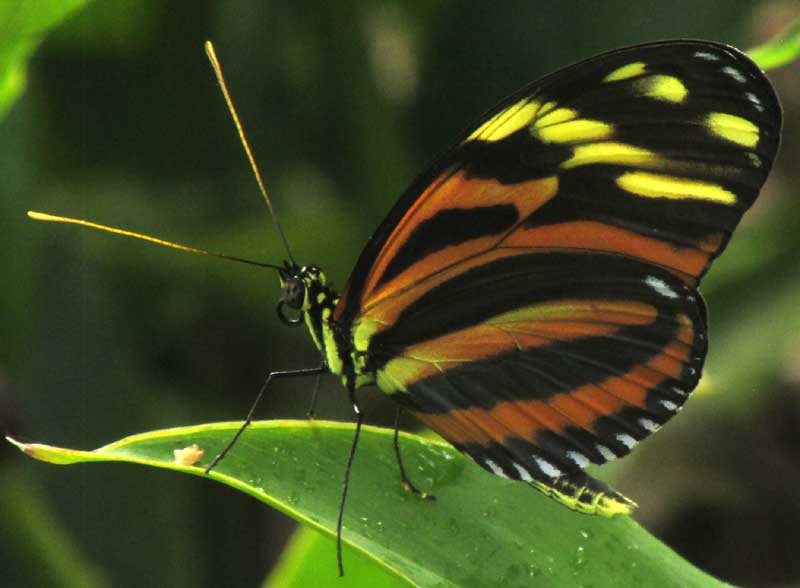Excerpts from Jim Conrad's
Naturalist Newsletter
from the November 30, 2018 Newsletter with notes from a camping trip into Chiapas, the southernmost state of MÉXICO
TIGER-STRIPED LONGWING
Last October 3rd when I was camping near Palenque Ruins in Mexico's southernmost state of Chiapas, at the wood's edge a butterfly turned up I'd not seen in the more arid Yucatan Peninsula to the north. below, you can see the little beauty:

Volunteer butterfly identifier Bea in Ontario had fun pegging this as the Tiger-striped Longwing, HELICONIUS ISMENIUS.
I was a little surprised that this species belonged to the longwing group -- genus Heliconius --, because the longwings I know have longer wings. For example, a common one in the Yucatan is the Zebra Heliconian shown at www.backyardnature.net/mexnat/zebra.htm
A little less frequent in the Yucatan is the Crimson-patched Longwing at www.backyardnature.net/yucatan/longwing.htm
Our Tiger-striped species occupies moist lowland forests from southern Mexico south all through Central America into northern South America, where sometimes they are abundant. Their caterpillars feed on passionflower vines, members of the genus Passiflora, which commonly occur throughout that area both as weedy species along roads and high-climbing vines in the forest.
Our Tiger-striped species is a member of the "tiger Müllerian mimicry ring," and in that there's a story. First, Müllerian mimicry is the phenomenon of two or more species sharing noxious traits evolving to develop a similar appearance, through "convergent evolution" -- evolving so that their appearances "converge" to similar-looking states. If a predator learns to avoid one of the undesirable species, the other species benefits as well. Similar-to-one-another species sharing the noxious trait are considered to belong to a particular "Müllerian mimicry ring," and our Tiger-striped species, being toxic and unpalatable to most predators, belongs to the "tiger" Müllerian mimicry ring, of longwing butterflies with tigerish stripes, and who similarly are toxic and unpalatable.